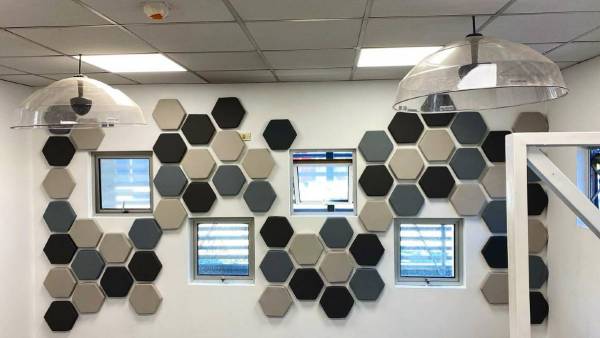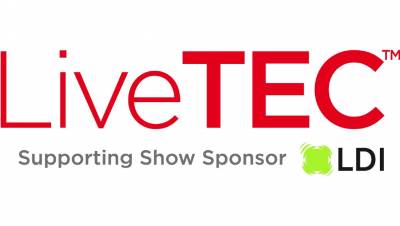Hector Gomez Perez
The moving image has always been an attraction for human beings, hence the supremacy that had over the radio the appearance of television with its successions of images that radically transformed the daily life of homes and the way individuals related to their local, national and global environment.
A technology that over the years has also changed the way of informing, selling and educating has been digital signage, precisely because of the impact and visual appeal, in addition to the level of recall it generates thanks to moving images and the ease it has to adapt the contents depending on the type of audience, the place, day and time.
We wanted to know more secrets of this technology and its impact on the Latin American market. That is why AVI LATINOAMÉRICA turned to the authoritative voices of Yael Elstein, vice president of marketing of C-nario; Adrian Morel, CEO of Lighthouse, and Carlos Gonzalez, Display Product Manager at Panasonic de Mexico. Three distant looks to talk about the same subject, looks ranging from software in the case of C-nario, LED screens, in the case of Lighthouse and flat screens in the case of Panasonic.
How is Latin America?
Although it is common to see these solutions in airports, department stores or shopping centers, the first thing we wanted to find out is if digital signage is definitely being used in the region as a means for the dissemination of commercial, informative and educational content. It should be noted, for example, that Elstein spoke of the fact that our countries must live a real awakening in the face of technology: "Latin America is a market that needs to awaken in the use of digital signage. There are few projects in the education and information sector, although there is more deployment on the commercial side, but it is still minimal."
Another point of view has Morel for whom digital signage in the region is going through the best moment, at least in the commercial area with which his opinion aligns with that offered by the representative of C-nario. "This technology in Latin America is at its best in the commercial area. We have examples like Brazil, Chile, Colombia, Ecuador, Guatemala and Mexico where outdoor content already has several years of successful experience." It should be remembered that Ligthouse is dedicated to LED screens.
For his part, González said that "more and more digital signage tools are used for different applications. In our opinion there has been a greater acepatación in the last three years and now we see more examples with commercial and informative content."
Speaking of the sectors that are making the most use of technology, González pointed out that in the Mexican case the food industry, film complexes, airports and bank branches have incorporated the use of plasma screens in an important way and in attractive quantities, combining informative and commercial content.
Morel pointed out that the industry of outdoor LED screens in the region intended for digital signage wants to follow in the footsteps of large American companies such as Lamar, ClearChannel or the French J.C. Decaux.
Contents and suggestions
In the actality the technology in question can display any type of content: text, video and images and the system can directly take the content from the web. While in some cases the informative or commercial content is provided by the business owner who has the digital signage solution, there are others that do it from advertising agencies dedicated to this. Elstein gave as an example Amigo, in the United Kingdom, Arsenal in Toronto and Show and Tell in the United States.
Now let's talk about the costs. A digital signage solution requires a considerable investment, hence the importance of a thorough analysis in making a purchase decision. How to optimize resources in the implementation of such a solution? The question acquires a lot of validity and the three experts referred to it as follows:
Morel considers the first step very important, that is, to acquire the solution after the need has arisen, because he has witnessed very good projects that do not go beyond the formality of the papers. "My recommendation for cost optimization is that the CEOs of these companies plan their business in global and transnational terms. That way, they can get important accounts or sponsors who are willing to buy space and content across national borders."
González made a list that could well be taken into account when implementing the technology:
- Invest in products for professional use that guarantee characteristics of resistance, durability, robustness, versatility of connections, etc.
- Work together with the manufacturer and a solution integrator to get the best out of both parties.
- Look for maintenance contracts that ensure solutions will always be working, demand immediate equipment replacements while devices undergo repairs, seek training for operational personnel, etc.
- See future projects, imagine scenarios in which solutions must grow or adapt to other conditions to make a smart investment.
Why digital signage?
For his part, Yael Elstein also proposed a list, this time to highlight the benefits of digital signage:
- This technology has the ability to reach the customer in places outside the home, greater impact through dynamic content, videos in high definition of colors and information in real time, among others.
- Influencing consumers' decision-making (reaching them anywhere).
- The ability to create dynamic content through seductive showcases in public spaces.
- Centralized monitoring and management systems.
- Market conditions that are easy to update.
- Creation of a unique experience for the customer.
- Effective transmission of information.
- Strengthened marketing.
- Increased revenue generation through advertising.
- Improvement in sales.
Now, there are also aspects that are difficult to handle within digital signage projects, and on which the guests emphasized. A project of this type is a combination of many components that need to be well integrated, for example hardware, screens, networks, content, software platforms, among others. In addition, the content must be distributed simultaneously on all screens with maximum synchronization and the highest quality.
On the other hand, the definition of the appropriate technology to meet the needs of the client and the objectives of the project becomes important, in addition to the definition of the available budget. Generally, errors in the implementation of a technology of this type knock on the door when there is poor planning and inadequate advice to the client, who in many cases does not fully know the technology and the benefits it offers.
Another common mistake is to choose a digital signage solution based on price, instead of adopting it from a global study. In addition to the theme of improvisation that was addressed by Morel and González. "This business requires 1% inspiration and 99% research. The improvisation variable is one that separates the waters of successful projects from those that are not."
Epilogue
It was already said at the beginning of this note that undoubtedly digital signage has grown in Latin America regardless of the technology used; however, there are aspects that can be improved so that market penetration in our countries is better. For example, Carlos González says that "although digital signage has grown, the budgets of projects of this type, some of them of international level, are still far from those available in the markets of Europe and the United States".
He also emphasized the need for those involved with technology to improve the dissemination of information, especially that is in Spanish, so that in a simple way the consumer knows about the benefits of digital signage. "Technological knowledge has always been the Achilles' heel for the end user."
Morel for his part touched on an issue that is very important in our countries and that has opposed the increase of digital signage in what has to do with LED technology: legislation.
"Comparing U.S. or European projects with Latin American ones, we see a legal limitation that prevents the development of outdoor digital signage. While in first world countries legislation promotes the use of outdoor LED screens, Latin America tends to eliminate it. For example, the Paulista legislation of April 2006, called 'clean city', eliminated more than 50 LED screens, authorizing only outdoor screens of the size of 2X2 meters. On the other side of the coin we have laws that prohibit dynamic LED screens or full video argued safety issues based on the distraction of the car driver. With this criterion, the use of short skirts by attractive young ladies who walk on public roads would have to be eliminated or restricted. This is more distracting than an LED screen, no matter how imposing it is.


























Leave your comment